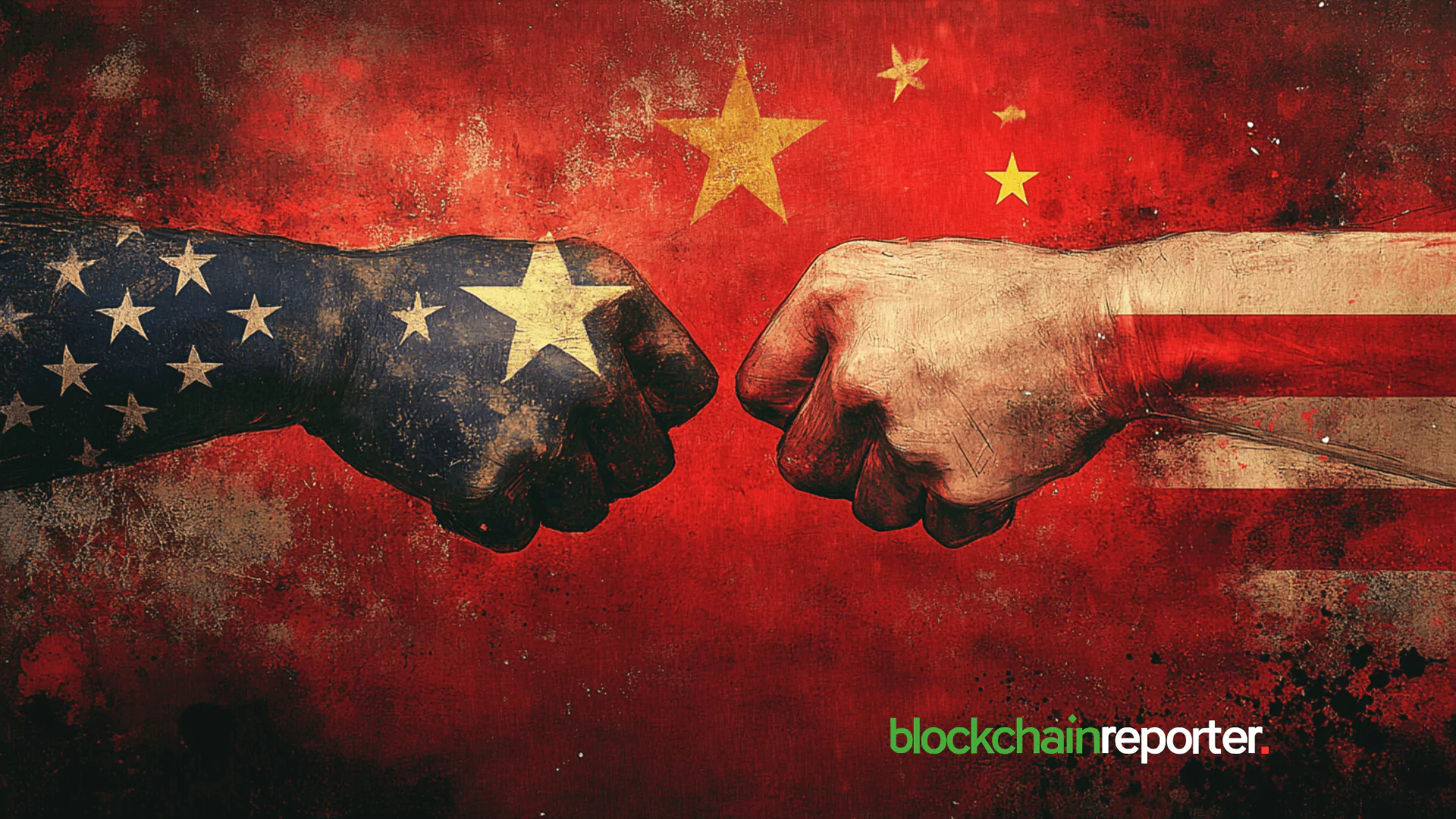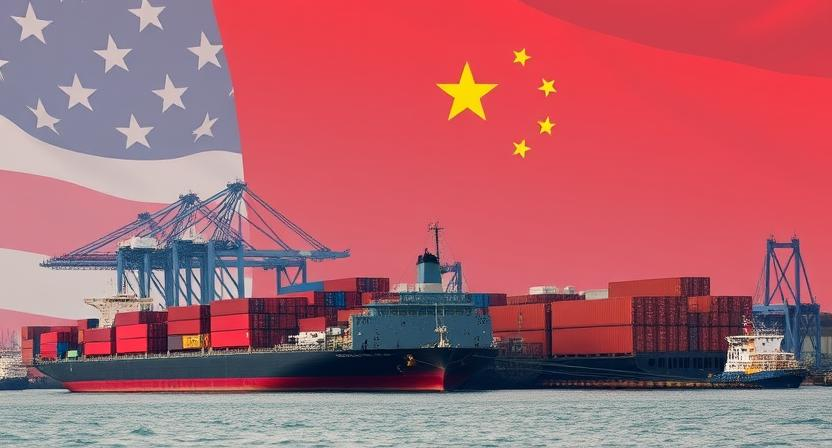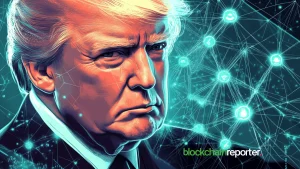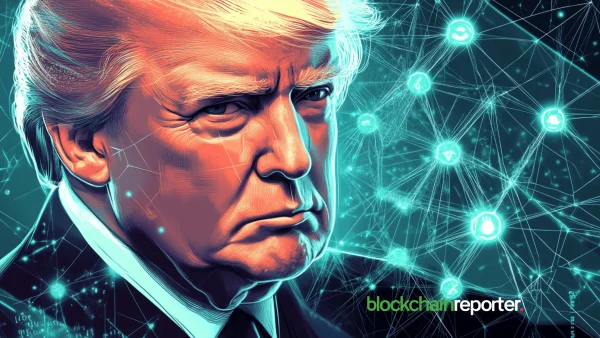
- 1. Historical Context: U.S.‑China Tariffs Pre‑2025
- 2. Trump’s 2025 Tariff Escalation
- 3. China’s Retaliatory Measures
- 4. Removal of the De Minimis Exemption
- 5. Impact on U.S. Consumers and Retailers
- 6. Industry Mitigations and Corporate Responses
- 7. Political and Diplomatic Developments
- 8. Sector‑Specific Effects
- 9. Future Outlook and Negotiation Prospects
- 10. Conclusion
In early April 2025, the United States dramatically ramped up reciprocal tariffs on Chinese imports—culminating in an across‑the‑board 125 percent duty—while China struck back with matching retaliatory levies on U.S. goods. Simultaneously, the U.S. moved to close the “de minimis” loophole, subjecting low‑value parcels (under $800) from China and Hong Kong to steep duties starting May 2, 2025.
These actions are part of Executive Order 14257, declared a national emergency to address persistent trade deficits. While industries scramble to mitigate costs—stockpiling inventory in U.S. warehouses and rerouting supply chains—both sides have signaled a potential de‑escalation. President Trump hinted he may refrain from further hikes amid concerns over consumer spending, and China has indicated it will not raise tariffs beyond 125 percent. This article explores the historical context, policy mechanics, economic and political ramifications, and what lies ahead for global trade.
Historical Context: U.S.‑China Tariffs Pre‑2025

The trade war between the world’s two largest economies began under the Trump administration in 2018, when the U.S. invoked Section 301 of the Trade Act of 1974 to impose tariffs on about $360 billion of Chinese goods—initially 10 percent, later rising to 25 percent—citing intellectual property theft and forced technology transfer. China responded in kind, targeting roughly $110 billion of U.S. exports—soybeans, automobiles, and agricultural products—with retaliatory duties as high as 25 percent.
Under the Biden administration, negotiations sporadically eased tensions, and limited tariff exclusions were granted for certain goods. However, overall rates remained largely unchanged through 2024, leaving businesses and consumers to absorb higher costs and supply‑chain disruptions.
Throughout 2024, discussions centered on targeted relief—such as exemptions for semiconductor equipment—while broader structural issues (e.g., subsidies to state‑owned enterprises) remained unresolved. By year‑end, the U.S. trade deficit with China hit a 15‑year high of $419 billion, renewing pressure for more aggressive measures. These deficits, coupled with domestic political imperatives to protect critical industries, set the stage for the latest escalation under Executive Order 14257 in April 2025.
Trump’s 2025 Tariff Escalation
On April 2, 2025, President Trump issued Executive Order 14257—“Regulating Imports with a Reciprocal Tariff to Rectify Trade Practices”—declaring a national emergency over the persistent U.S. goods trade deficit and directing reciprocal tariffs on all imports from China equal to the tariffs China imposes on U.S. products.
- April 4: The White House applied a 34 percent reciprocal tariff on all Chinese goods (excluding a narrow list of critical medicines and medical supplies), effective April 10.
- April 8: Trump signed a follow‑on order increasing the tariff to 84 percent, triggering China’s second round of retaliation.
- April 9–10: Both sides rapidly escalated to 125 percent—China raising its duties on U.S. imports first, followed by the U.S. matching those rates on Chinese goods.
- Additive Effects: Because these reciprocal tariffs stack with pre‑existing levies (20 percent “fentanyl/migration” tariffs, 25 percent Section 301, and 3.4 percent ordinary customs duties), certain products—like lithium‑ion EV batteries—now face combined duties up to 173.4 percent.
Trade compliance experts warn that these steep, multi‑layered tariffs could upend supply chains, forcing U.S. companies to seek alternative sourcing or absorb dramatically higher import costs.
China’s Retaliatory Measures
Beijing responded in lockstep:
- April 4: A 34 percent tariff on all U.S. goods, effective April 10, targeting sectors from agriculture to machinery.
- Subsequent Rounds: China then raised tariffs to 84 percent on April 9 and 125 percent on April 12, mirroring U.S. actions.
- Export Controls: In tandem, China suspended exports of certain critical minerals and rare earth magnets used in aerospace and defense, citing national security concerns.
According to the State Council Tariff Commission, further tariff hikes were unlikely, as current rates rendered U.S. exports almost untenable under existing trade conditions. Observers note that China’s retaliatory pattern seeks to balance economic pain points—hitting politically sensitive U.S. industries—without fundamentally undermining its own import‑dependent sectors.
Removal of the De Minimis Exemption
In parallel, the U.S. announced on April 16 that, beginning May 2, all low‑value packages from China and Hong Kong (previously exempt if under $800) would incur tariffs of 120 percent or a $100 fee per shipment; this fee rises to $200 by June 1. The policy aims to curb small‑parcel e‑commerce imports—dominated by Shein and Temu, which collectively accounted for nearly half of such shipments in 2023, valued at $66 billion.
Critics argue the move will dramatically increase costs for American consumers, especially lower‑income households who rely on affordable fast‑fashion and household goods. Some retailers are preemptively stockpiling inventory in U.S. warehouses to hedge against the tariff shock, while others are exploring alternative manufacturing hubs in Southeast Asia to maintain price competitiveness.
Impact on U.S. Consumers and Retailers
Analysts warn that importers will pass on higher duties to end‑users, fueling inflationary pressures already elevated at 4.2 percent year‑over‑year in March 2025. Discretionary spending could decline as consumers factor in the increased cost of apparel, electronics, and home goods.
- E‑Commerce Platforms: Shein and Temu are expected to see order cancellations and reduced margins unless they absorb part of the cost—a strategy that would squeeze profitability.
- Brick‑and‑Mortar Retailers: Some small‑chain stores, heavily reliant on low‑cost imports, may face inventory shortages or be forced to seek domestically produced alternatives, which often carry higher price tags.
- Logistics and Postal Services: Carriers must now collect additional customs data and handle new fee structures, increasing operational complexity and costs that may be partially transferred to shippers and consumers.
The net effect is a likely uptick in consumer prices later this year, with lower‑income households bearing the brunt of the tariff‑induced price increases.
Industry Mitigations and Corporate Responses
Faced with heightened duties, multinational companies are:
- Reconfiguring Supply Chains: Shifting production to Vietnam, India, and other ASEAN countries to qualify for lower‑tariff or tariff‑free status under various trade agreements.
- Stockpiling and Inventory Management: Importing larger volumes before May 2 to lock in pre‑existing duty rates, then distributing from U.S. warehouses over several months.
- Cost Absorption and Pricing Strategies: Negotiating with suppliers for shared tariff burdens or raising wholesale prices incrementally to avoid consumer sticker shock.
Sectors such as apparel and electronics are leading the push to diversify manufacturing, whereas industries with complex supply chains—automotive, aerospace—face greater challenges in finding non‑Chinese input sources on short notice.
Political and Diplomatic Developments
Despite the escalation, both presidents have signaled an openness to negotiation:
- Trump’s Rhetoric: On April 17, he acknowledged that excessively high tariffs could backfire by denting U.S. consumer purchasing power, and that he might refrain from further increases “at a certain point.”
- China’s Position: Beijing’s Commerce Ministry stated that China would not impose additional tariffs beyond the current 125 percent, suggesting readiness for talks once the reciprocal measures stabilize.
- TikTok Leverage: Trump linked the resolution of TikTok’s U.S. ownership issue—with 170 million American users—to broader trade negotiations, effectively using data‑privacy and national‑security concerns as bargaining chips.
Political analysts note that with U.S. midterm elections looming in November 2025, both sides may find incentive to de‑escalate before domestic pressures mount—particularly as higher consumer prices risk voter dissatisfaction.
Sector‑Specific Effects
- Automotive: Electric vehicle (EV) makers reliant on Chinese batteries face combined duties exceeding 170 percent for battery imports, potentially eroding the cost advantage of U.S.‑assembled EVs unless domestic battery production scales rapidly.
- Technology and Electronics: Components such as semiconductors, printed circuit boards, and consumer gadgets will see duty spikes from 25 percent base rates to over 100 percent, forcing companies to accelerate on‑shore manufacturing initiatives and government‑backed subsidy programs.
- Agriculture: With soybean and pork exports already hampered by prior Chinese tariffs, American farmers will find it nearly impossible to regain market share under the 125 percent levy, heightening reliance on alternative markets and domestic relief programs.
These sectoral shocks underscore the administration’s challenge: balancing strategic decoupling from China against the real‑world costs borne by U.S. businesses and workers.
Future Outlook and Negotiation Prospects
Trade experts anticipate several possible pathways:
- Targeted Negotiations: Carve‑outs for critical sectors (e.g., semiconductors, medical equipment) in exchange for phased tariff rollbacks.
- Comprehensive Trade Deal: A broader U.S.–China agreement addressing not only tariffs but also non‑tariff barriers, forced technology transfer, and state subsidies—although such a deal remains elusive after seven years of talks.
- Status Quo with Stabilization: Both sides maintain current rates, avoiding further hikes while allowing businesses to adapt, effectively “tariff fatigue.”
China’s pledge not to escalate beyond 125 percent, and Trump’s hesitancy to push consumer prices higher, create a window for diplomatic engagement. However, mutual distrust—reinforced by geopolitical tensions over Taiwan and human rights—means any agreement would require careful calibration and enforcement mechanisms.
Conclusion
The latest tit‑for‑tat tariff escalation marks a critical juncture in U.S.–China economic relations. With both governments wielding reciprocal duties as leverage, the risk of collateral damage to consumers, farmers, and global supply chains is high. Yet signals from Washington and Beijing suggest that neither side seeks an unbounded trade war.
For U.S. businesses and consumers, the coming months will test their ability to adapt—through supply‑chain diversification, inventory strategies, and active engagement in policy discussions. Ultimately, a durable resolution will hinge on bridging deep‑seated structural differences, balancing national security concerns with the economic realities of interconnected markets.
Frequently Asked Questions
What are the current U.S. and China tariff rates after the April 2025 escalation?
On April 9, 2025, President Trump raised reciprocal tariffs on Chinese imports to 125 percent—added atop existing 20 percent fentanyl‑related and Section 301 duties—resulting in combined rates up to 145 percent on affected goods.
Which products and industries are most impacted by the recent tariff hikes?
Electric vehicle (EV) components—particularly lithium‑ion batteries—now face compounded duties exceeding 170 percent due to the new 125 percent reciprocal levy stacked on pre‑existing tariffs, threatening to erode cost advantages for U.S.‑assembled EVs.
How does the removal of the de minimis exemption affect small‑package imports from China?
Starting May 2, 2025, the U.S. will eliminate the de minimis exemption for packages valued under $800 from China and Hong Kong, subjecting them to a 120 percent ad valorem tariff or a $100 per‑package fee, which rises to $200 by June 1.









